Reports

On 30 October, prof. Mgr. Petr Páta was inaugurated into office of the Dean of the Faculty of Electrical Engineering for the term from 1 July 2019 to 30 June 2023 in the Bethlehem Chapel. The ceremony was attended by representatives of CTU and the Faculty of Electrical Engineering, including the Rector of CTU, doc. Vojtěch Petráček and other members of the academic community.

Scientists from the Center of Advanced Photovoltaics at the Department of Electrical technology of the Faculty of Electrical Engineering are developing highly efficient solar cells based on hybrid organic-inorganic perovskites. They have now achieved an efficiency of 19.1%.

On behalf of the CTU Management, the CTU Rector doc. Vojtěch Petráček and Chancellor Ing. Lucie Orgoníková honored the memory of Marie Charousková, a laboratory technician at the Research Institute of Agriculture, who studied distantly at the Faculty of Mechanical Engineering of the Czech Technical University on 31 October. They laid flowers and lit a candle at her memorial in Prague's Klarov.

In order to compare the level of quality of study at universities of architecture and related disciplines, the Czech Chamber of Architects organizes an annual Review of Diploma Theses. It was the 20th year this year. A total of 78 diplomas applied for the award. The work was evaluated by an expert jury headed by President David Matásek. Other members were architects David Jiránek, Eva Kováříková and Jan Mléčka and art historian and theoretician Martina Mertová. The judges mainly assessed the architectural quality of the submitted works.
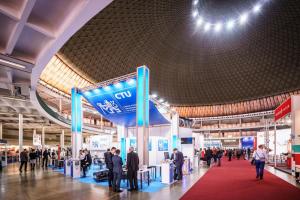
The International Engineering Fair was held at the Brno Exhibition Center from 7 to 11 October. The Faculty of Mechanical Engineering presented an unusually large number of exhibits, most of which were in line with the main theme of the fair - Industry 4.0 and the digital factory. The two-meter statue printed on a 3D printer from recyclable filament called Kaleidoscope by turkish student Ekin Ünlü from the Faculty of Architecture was then auctioned off on 8 October in the presence of Karel Havlíček, Minister of Industry and Trade. It is a winning design that emerged from the Digital Factory student competition.
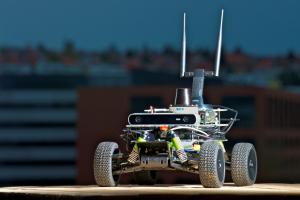
A team of students from CTU in Prague led by prof. Zdeněk Hanzálek from the Czech Institute of Informatics, Robotics and Cybernetics won the 3rd place in the Formula F1 / 10 Autonomous Formula Competition at Columbia University in New York. The competition took place on 14 October 2019. Overall 11 teams from all over the world qualified for the competition.
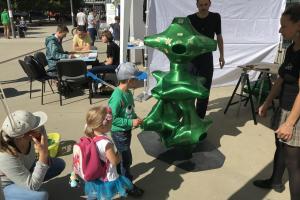
A two-meter statue printed on a 3D printer from a recyclable filament called Kaleidoscope by Ekin Ünlü from Turkey was auctioned off on 8 October at the International Engineering Fair in Brno in the presence of Karel Havlíček, Minister of Industry and Trade. It is a winning design that came from the Digital Factory student competition.
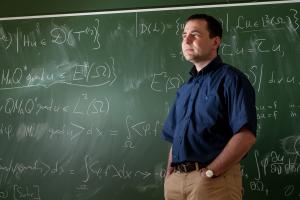
In October 2019, the first representative of the Czech Republic in the Executive Committee of the Mathematical Models Group for Interactive Network Dynamics, established within the COST (European Cooperation in Science and Technology) organization, became doc. David Krejčiřík from the Department of Mathematics, Faculty of Nuclear Sciences and Physical Engineering, CTU in Prague.
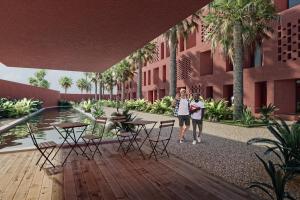
The Czech Embassy in Addis Ababa, Ethiopia, will build according to the design of twenty-three-year-old students of the Slovak University of Technology in Bratislava. They won in a special category of the fourth INSPIRELI AWARDS international competition. The competition was attended in four categories by a total of 1,038 contestants with 887 projects. This competition within the INSPIRELI AWARDS was announced by the Ministry of Foreign Affairs of the Czech Republic together with the Department of Architecture of Faculty of Civil Engineering. There were 281 projects from 474 students from 38 countries on 6 continents. The winners are Slovak students Jana Hájková and Kristína Boháčová, who are completing their sixth year of architecture at the Faculty of Architecture of the Slovak University of Technology in Bratislava. The award ceremony was held on 10 October at the Faculty of Civil Engineering, CTU in Prague.
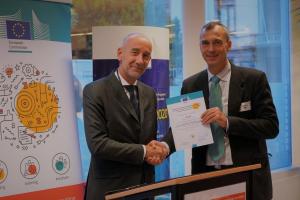
On September 24, 2019 in Brussels, Director of the Czech Institute of Informatics, Robotics and Cybernetics with the Czech Technical University (CIIRC CTU) Ondřej Velek and Director General of the European Commission Jean-Eric Paquet signed a document granting 15 million Euro funding for the establishment of the RICAIP Centre of Excellence.